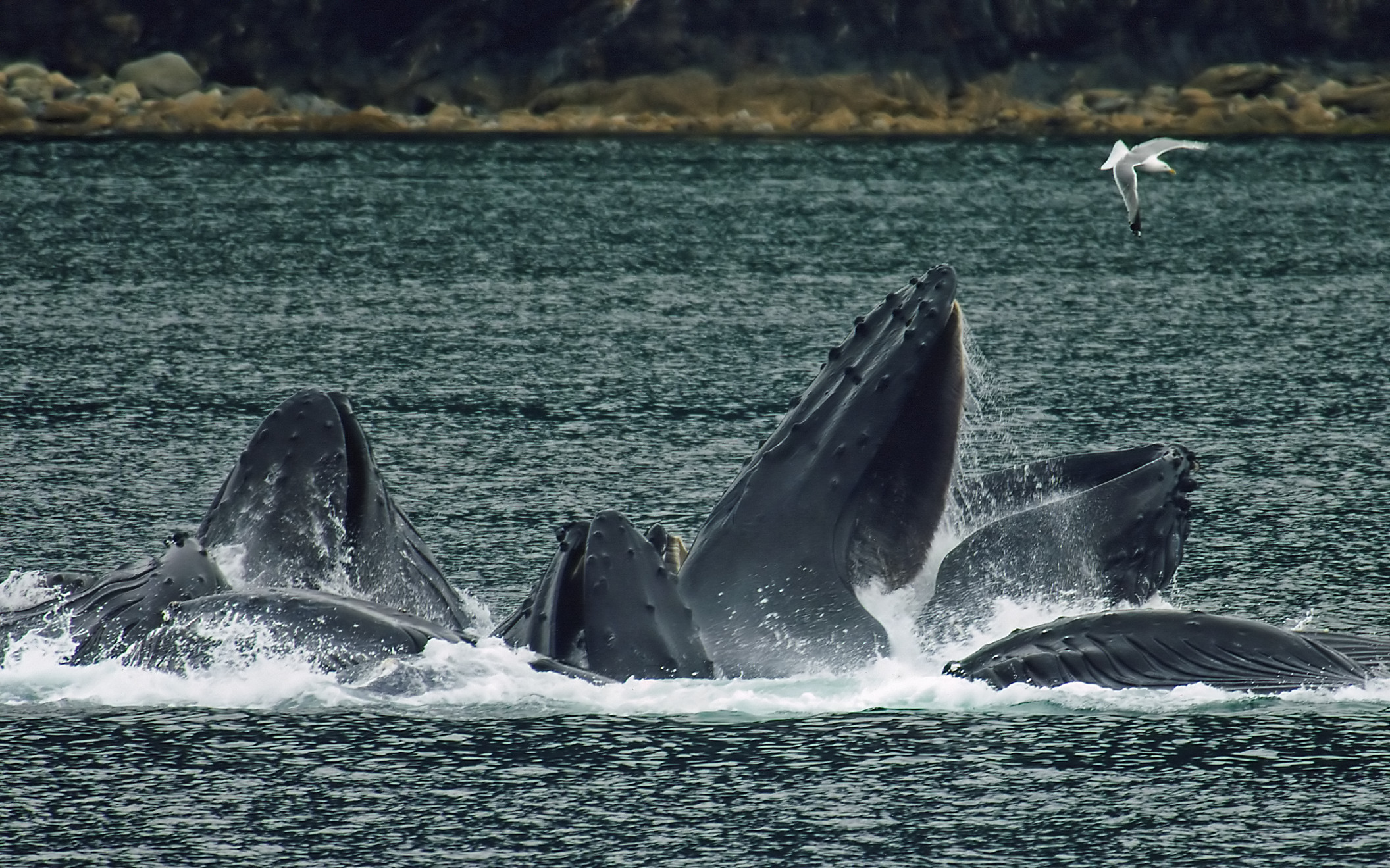Cetaceans break my heart. They are the fragile and failing embodiment of old earth intelligence and majesty. Ever floating, flying, falling within a deep blue salty matrix of emotional complexity: empathy, loyalty, compassion, delight, elation. Further reinforcing this mystique and sensitivity last week was the Whale Museum’s revelation of the cultural breadth and character of Orca matriline song clans and formal pod greeting ceremonies.
It makes me sad. Truly. To think how singular and momentous they are and how close they have come to vanishing completely.
So… in an effort to fend off the potential for waxing melencholic… I’m posting a blog on blowing bubbles!
Humpback Whale Bubble Blowing
Humpback whales are efficient and practical with their bubble blowing escapades. They have a coordinated group feeding behavior that relies on mad bubble blowing skills of a single whale within their hunting party. That one talented creature blows a curtain of bubbles around schooling fish.
Fish fleeing from the whales below are corralled within the net of bubbles. At just the right time to take advantage of this capture, a synchronized singsong cue urges the entire hunting party of humpbacks upward. Surfacing all together with mouths wide open, the whales are able to efficiently consume dense patches of prey. The whales repeat this combined bubble net/surface plummet behavior over and over again, with each whale rising in exactly the same position relative to their fellow hunters. The veritable flight pattern of a predatory fleet. Blue Angels beware! Check out a video of this lethal bubble behaviour here: Humpback Whales Bubble Net Feeding
Bottlenose and Beluga Bubble Play
Cirque du Soleil artists–even the water-infused talents of “O” performers–haven’t got anything on the torodial air-core vortex ring juggler Tursiops truncatus or the ballistic bubble blower Delphinapterus leucas. There doesn’t seem to be a “practical” purpose for this behavior–both learned and spontaneously invented by dolphins where this has been observed–other than sheer entertainment.
Check out this play behavior in these two videos:
Bubble Ring Physics
Finally, just in case you are curious about the physics of air-core vortex rings, Marten et al. describe their formation this way in a Scientific American article:
“Any spherical bigger than about two centimeters in diameter will quickly become a ring because of the difference in water pressure above and below the bubble. Water pressure increases with depth, so the bottom of the bubble experiences a higher pressure than the top does. The pressure from below overcomes the surface tension of the sphere, punching a hole in the center to create a doughnut shape. As water rushes through the hole, a vortex forms around the bubble. Any vortex ring travels in the same direction as the flow through its center; in the case of these simple air rings, the vortex flow, in combination with the air’s natural buoyancy, propels the bubbles toward the surface.”
Learn How To Blow Your Own Air Bubble Ring Here



